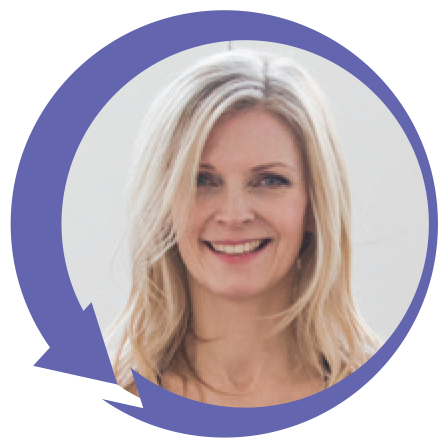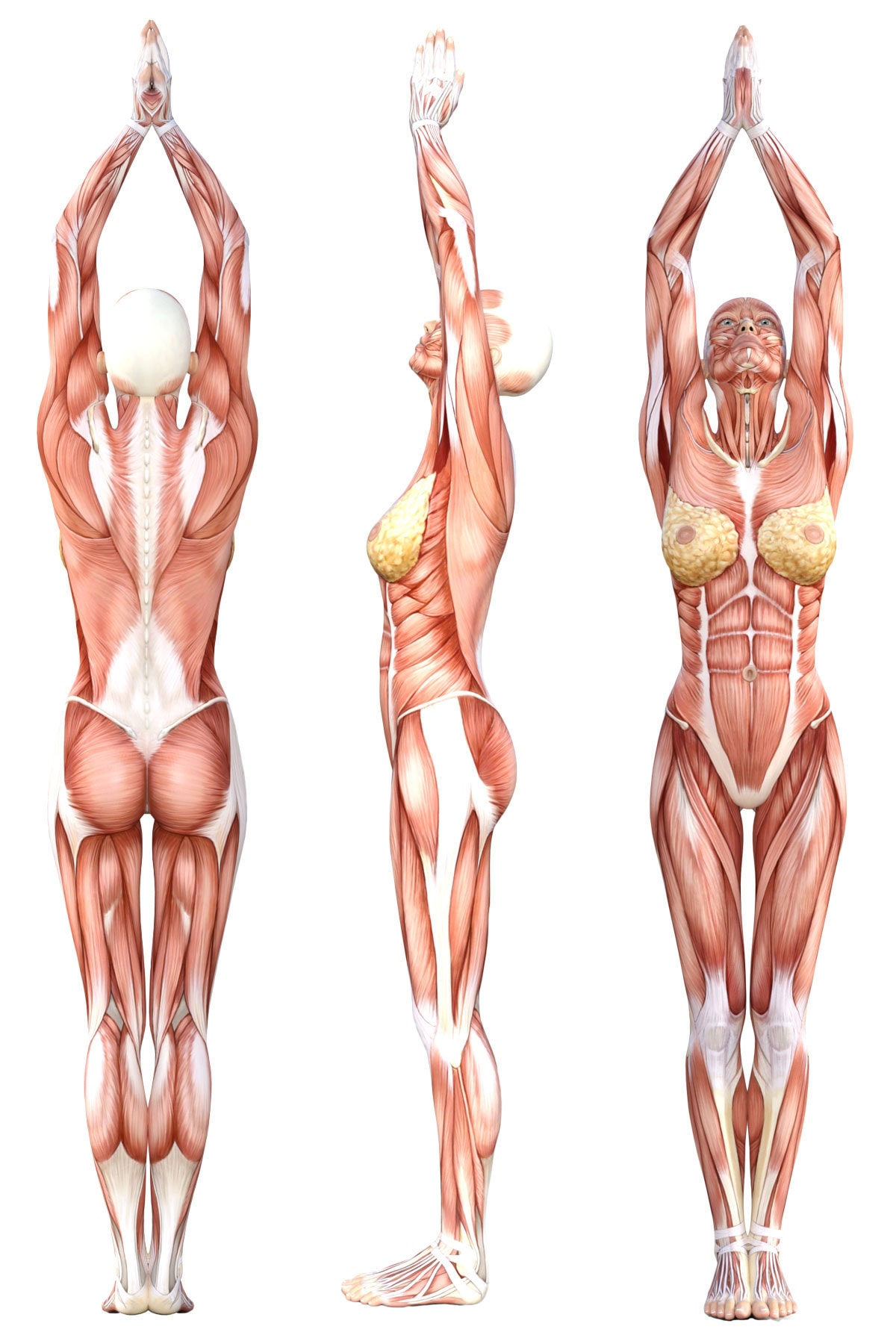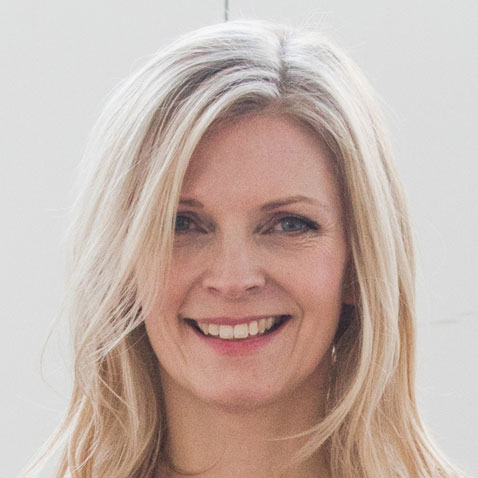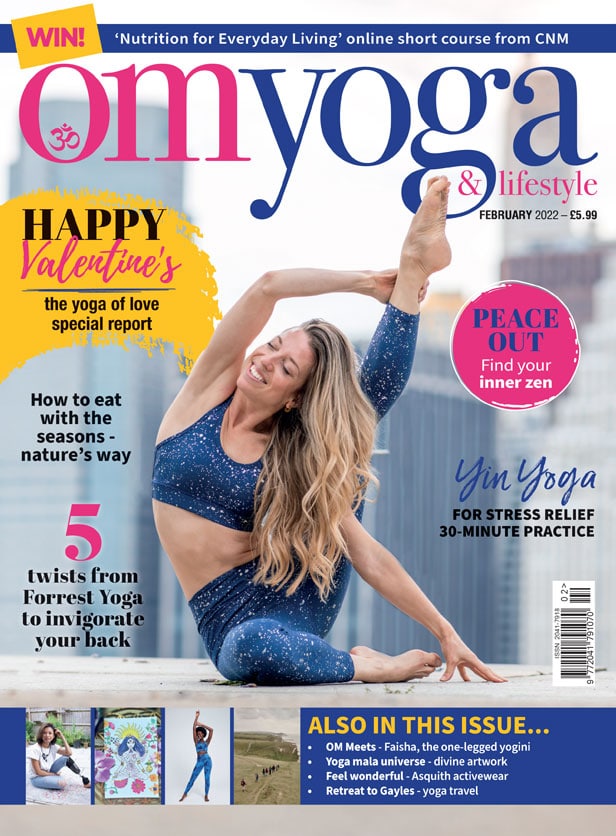
A 360º overview of...
Upward Salute Pose (Urdhva Hastasana)
With Dr Kiki Morriss
Throughout 2022, OM will be exploring all the key poses that make up Sun Salutation, yoga’s most familiar and graceful sequence. By Dr Kiki Morriss
Sun Salutation 2022
This year we are going on a journey through the poses that make up the Sun Salutation, which you’ll find in many styles of yoga from Sivananda to Ashtanga and Vinyasa Flow.
Month by month, from January to July, we will look in depth at each one of the foundation poses that create this graceful and familiar sequence. Give yourself the time to properly learn each pose to ensure you stay injury free and maintain a sustainable yoga practice through this year and beyond.
In the latter half of 2022, we will study some poses that can be added to the Sun Salutation sequence to create variety and diversity within the flow.
Whether you are new to yoga or have been practicing for many years, this guide will inform and deepen your practice. I am excited for you to follow along and learn with me through the year.
This month we are looking in depth at the second pose of the Sun Salutation sequence: Upward Salute Pose (Urdhva Hastasana).
Upward Salute Pose
(Urdhva Hastasana)
Urdhva = Upwards
Above Hasta = Hand
Asana = Posture
Urdhva Hastasana teaches you to be grounded on the earth at the same time as lifting your vision and heart to the sky above and to the space around you.
FEET
- Stand with your feet together and facing forwards.
- Allow your big toes and the centres of your inner ankles to touch.
- Lift your heels and extend them back, as you lower them down to the ground.
- Lift your toes and stretch them forwards, as you lower them down to the ground.
- Spread your weight evenly across the inner and outer edges of your feet and across the surface of your feet.
- Feel light on your feet, as you lift your arches.
LEGS
- Engage your quadriceps to straighten your knees.
- Activate the adductor muscles of your inner thighs to draw your femurs (thigh bones) together.
- Lift your inner and outer ankles and draw your Achilles tendons up.
ARMS
- Use your anterior deltoids to lift your arms.
- Engage your triceps to straighten your elbows.
- Bring your hands into prayer pose (Namaste) above your head.
- Activate the long head of your triceps to lift your arms higher.
UPPER BODY
- Use your gluteus maximus, erector spinae and quadratus lumborum to lift and slightly arch your back.
- Lift your sternum (breastbone) upwards.
- Activate the lower third of your trapezius to soften your shoulders away from your ears and make space for your neck.
- Use your infraspinatus and teres minor muscles of the rotator cuff to externally rotate your shoulders.

NECK
- Open the front of your neck and meditate on opening your Vishuddha or throat chakra. This is where you find your voice, express yourself and speak your truth. The throat chakra is associated with truth and clarity. When it is open and balanced you are able to speak openly and honestly, with compassion and concern for others.
- Extend your cervical spine.
HEAD
- Listen to how your body feels right now.
- What sensations do you observe in the palms of your hands and in the soles of your feet?
- Observe the distractions of your mind. Allow your thoughts to come and go without identifying with them. Keep returning to the practice of observing the rise & fall of your breath.
- Experience peace, harmony and unity within.
INSIGHTS IN UPWARD SALUTE POSE
- Allow your head to gently tilt backwards.
- Gaze softly upwards to your thumbs or to the sky and the stars beyond.
BENEFITS
- Improves your posture and balance.
- Encourages mind/body connection.
- Establishes your foundation for all yoga poses.
- Develops focus and concentration.
- Mobilises your neck and shoulders.
- Stretches the front of your torso.
- Increases the flexibility of your spine.
CONTRAINDICATIONS
- Practice this pose with care if you have a shoulder injury or pain.
- Avoid tilting your head back if you have neck injury or pain. In this case keep your chin parallel to the ground and gaze straight ahead.






